Climate change and farming: what you need to know about the IPCC report

Last week, the Intergovernmental Panel on Climate Change (IPCC) released its summary report highlighting the most urgent climate change challenges. How we grow our food stands out as one of the key areas of concern.
The experts at the CGIAR Research Program on Climate Change, Agriculture and Food Security (CCAFS) provide a breakdown of the most important take-aways related to agriculture and food security (click to download).
1.Climate change is affecting crop yields. Maize and wheat yields have taken a hit in some of the world’s most important breadbaskets. For example, in China maize production has decreased by 7 percent and wheat yields in Russia have plummeted by 14 percent.
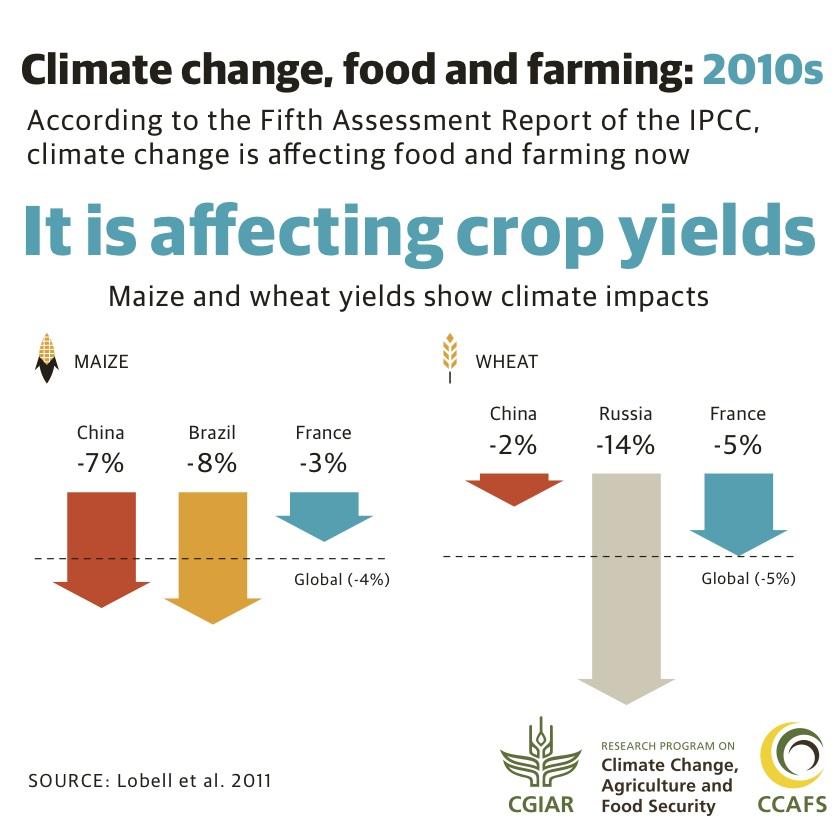
2. It is affecting prices. Seasonal climate extremes mean major crops like wheat and maize have failed to deliver expected yields. When this happens, food prices rise.

3. When prices rise, poor people in Africa and South Asia are the worst affected because they spend a much higher portion of their income on food. Poor people in Malawi spend nearly 78 percent of their income on food, while poor in the US, spend just 21 percent.

4. Tropical regions are most vulnerable to the effects of climate change on food systems. In sub-Saharan Africa, nearly 25 percent of the population is undernourished, while 17 percent of the population in South Asia is undernourished.
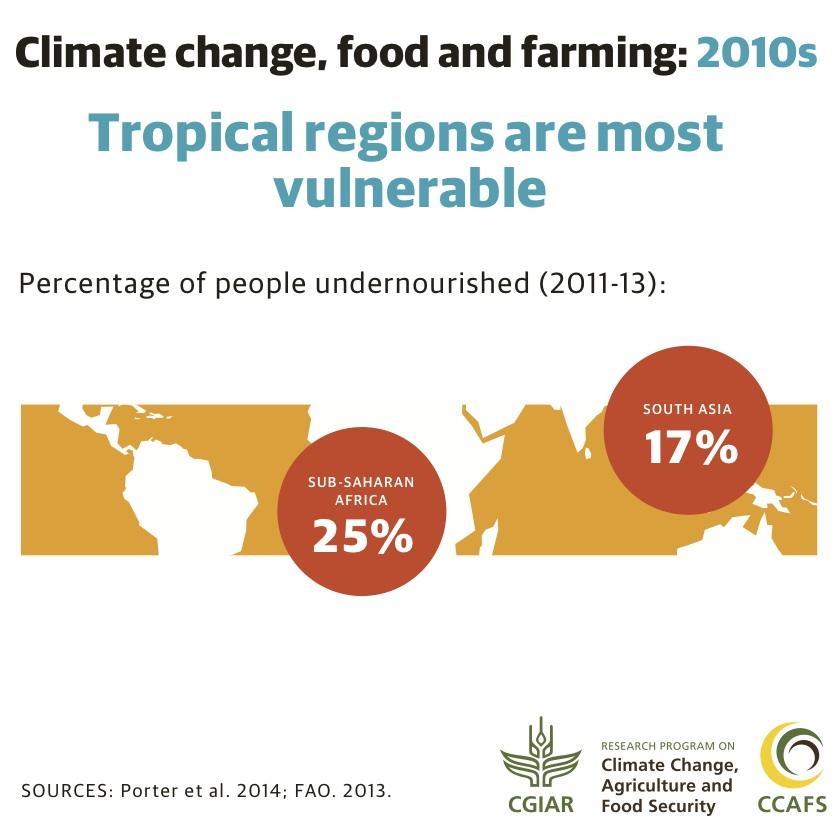
5. Farmers are already adapting to climate change by changing their planting dates and using different kinds of crops, but more needs to happen.
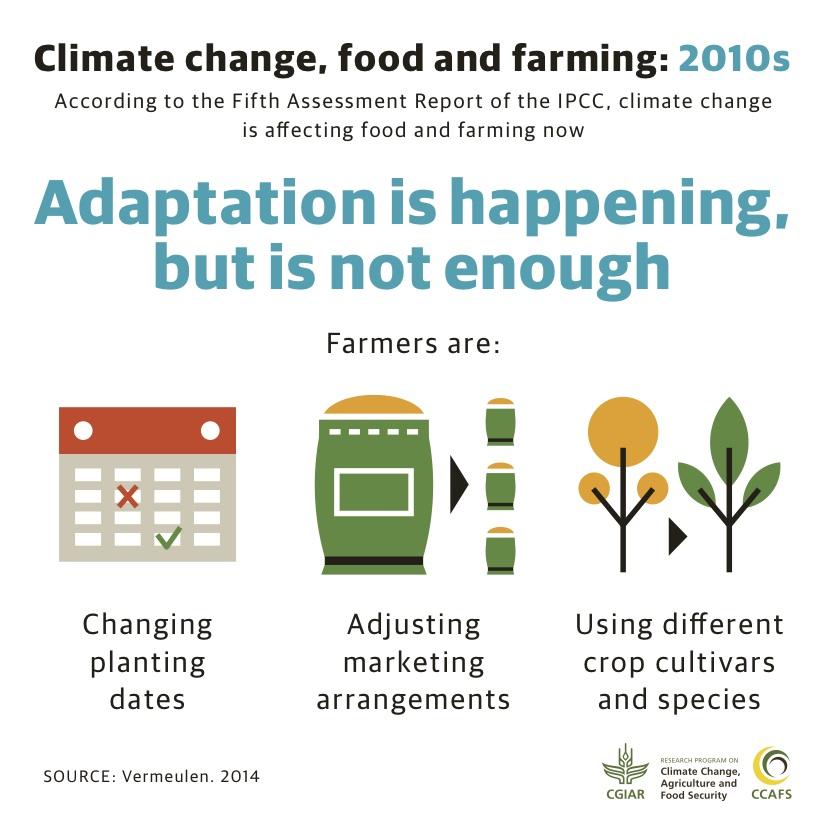
6. By 2030, crop and pasture yields are likely to decline in many places. For example, in parts of Brazil, rice and wheat yields are likely to decline by 14%.
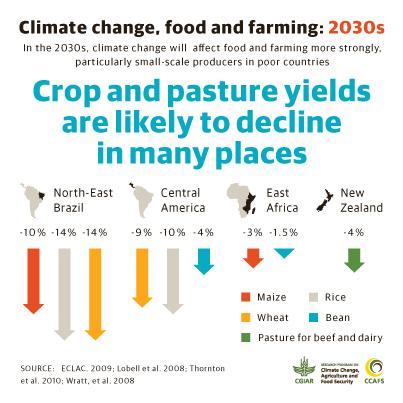
7. Adapting crops, livestock and fisheries will be critical. Farmers might need to switch to new varieties or crops that are more tolerant to heat, drought or salinity, for example. Livestock keepers will need to think about the rise of new diseases affecting their cattle and crops. Fishers might need to restore degraded breeding sites like mangroves to maintain fish populations.
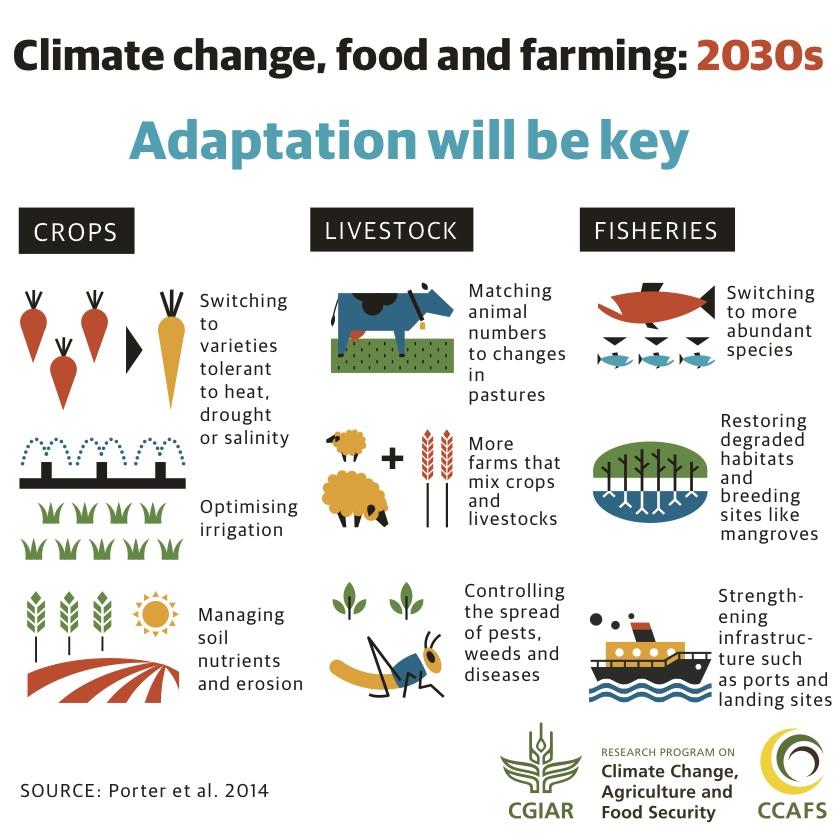
8. By 2050, widespread impacts on food and farming are highly likely. For example, we’re likely to see an 8 percent average decline in yields for 8 major food crops across Africa and South Asia.
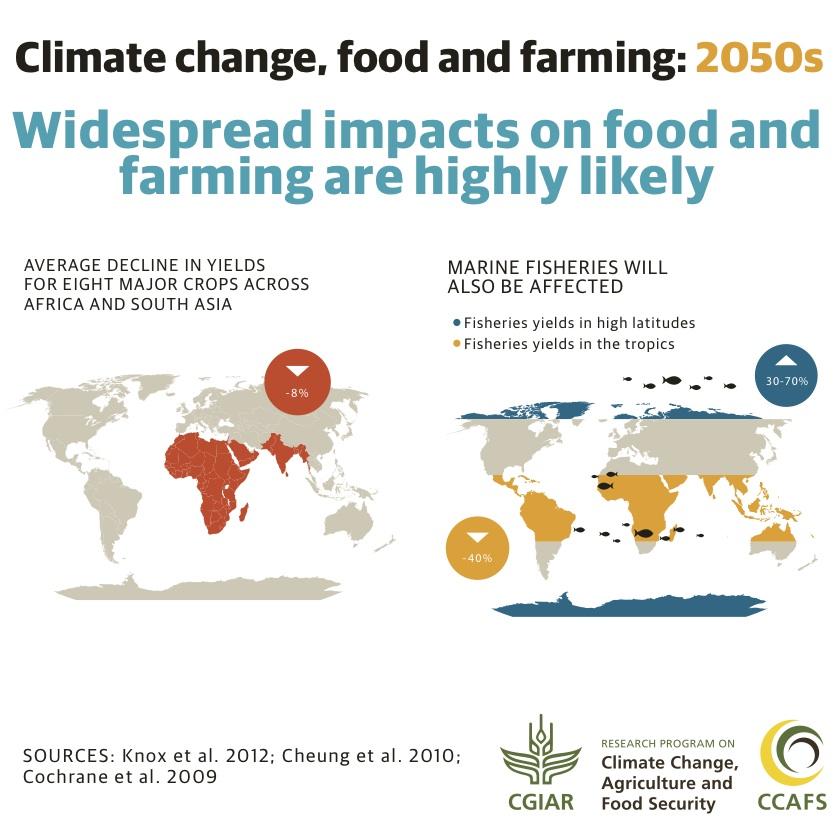
9. Temperature increases more than 4 degrees and changes in water cycles and rising sea levels will mean passing critical thresholds, endangering the ability of farmers to adapt.
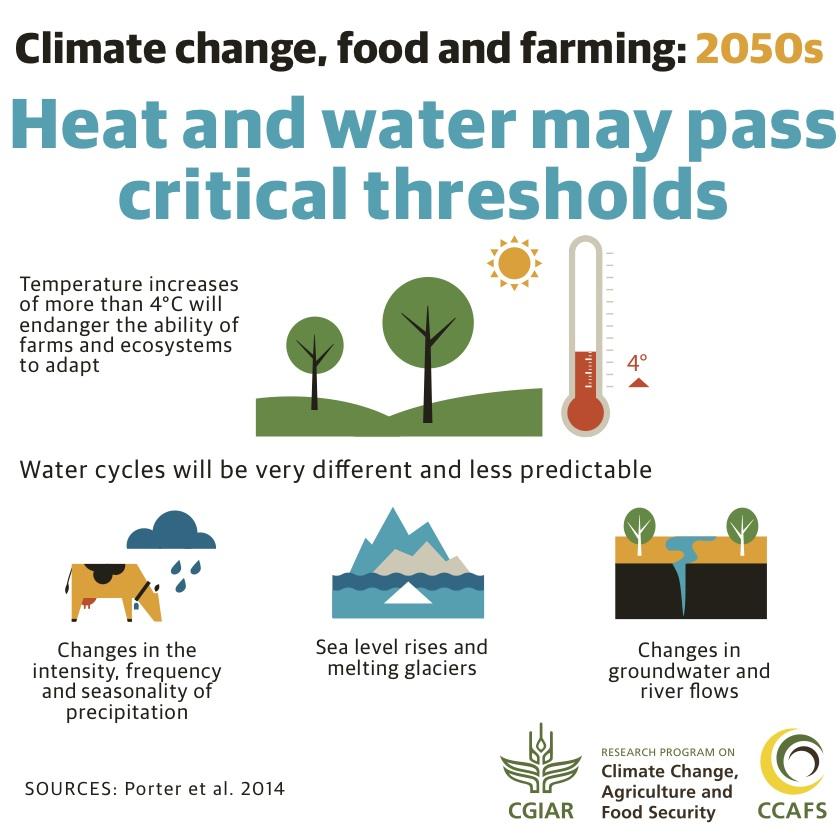
10. We need major innovations in how we eat and farm to cope with our changing climate. This might include changing what we eat or shifting the way we use entire areas of land.

Read our full analysis of what the IPCC's findings mean for food and farming. Download: Vermeulen SJ. 2014. Climate change, food security and small-scale producers. CCAFS Info Note. CGIAR Research Program on Climate Change, Agriculture and Food Security (CCAFS). Copenhagen, Denmark.
